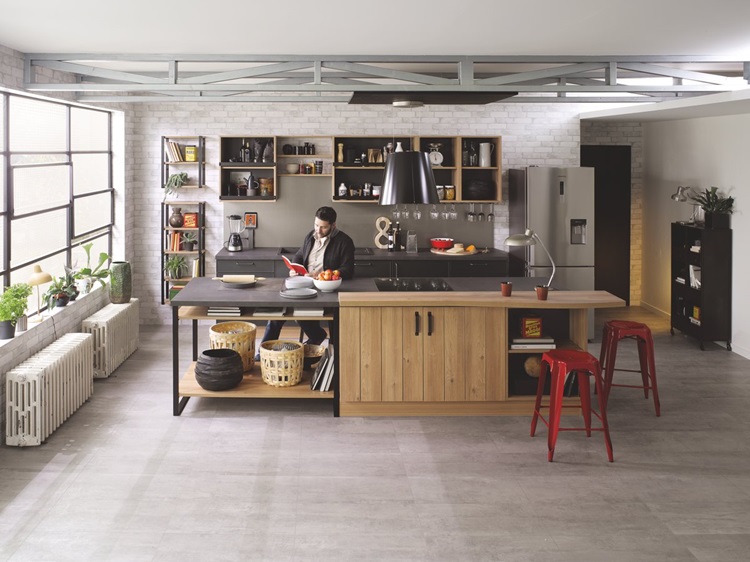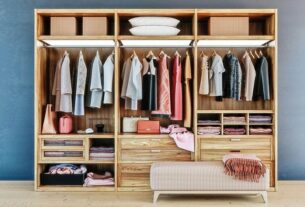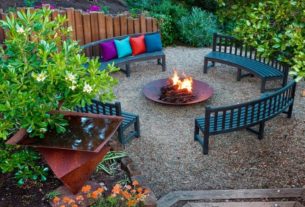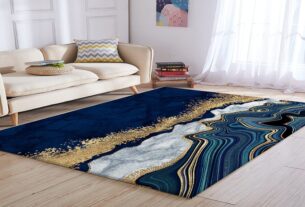The work plan is one of the key elements of a kitchen: placed at height, it is he who gives the “the” in terms of decoration! In addition to the aesthetic criteria, you will have to choose the material, thickness and format best suited to your needs. My Customized Interior guides you today to find the perfect worktop!
What format for my work plan?
The format of your worktop is inseparable from the layout of your furniture. The width, between 60 and 65 cm, depends on the position of the low furniture, contiguous or not to the walls of your kitchen. You can leave a crawl space (what we advise you), that is to say to slightly overflow the work plan on the front (where are the doors of cupboards) to clean it more easily with the daily. Side length, the work plans range between 1.80m and 3.20m. The tailor-made will be preferred if your kitchen has atypical dimensions!
Last point, the edges. Straight or rounded, it’s all about aesthetics – the straight edges add a more contemporary look to the kitchen – and safety in case of shock.
How thick for my work plan?
Worktops are available in 4 standard thicknesses: 16 mm , 28 mm , 38 mm and 58 mm . Recently, there are also worktops 20mm thick, also called “slim plans”. Once again, the choice of thickness will depend primarily on the desired aesthetic rendering: thicker for a “rustic” effect and finer for a contemporary look. Think of your daily comfort by choosing a height adapted to your morphology: your arms must be positioned at right angles to avoid back pain! So do not hesitate to raise the worktop in strategic places (sink, cutout …) by adding an extra thickness: you can play on the contrast of materials by opting for solid wood for example, “butcher board” .
What materials for my work plan?
Cooks are now rivaling imagination to offer us materials adapted to all styles of cooking. Each obviously has advantages and disadvantages that we detail in this paragraph.
- Laminate : This is the favorite material of French households. Heat resistant, easy to maintain, it has a variety of decorations that adapt to all environments. Non porous, it cleans with a simple blow of sponge! However, be careful if you want to use the same material for your credence: the laminate can not be positioned behind your hob.
- Inox : it is a material that can be found in all the kitchens of the great chefs. Very hygienic, resistant and easy to maintain, stainless steel also has a nice industrial touch that makes us crack! Only drawback, it is very sensitive to limestone and scratches. A soft sponge and a cutting board are therefore essential …
Very aesthetic, stainless steel is however little chosen by the particular because of its sensitivity to scratches (Photo: Planspluriels.fr)
- Wood : it adapts to all styles of cooking, from the most modern to the most rustic! Wood is obviously preferred for its warmth and incomparable aesthetic appeal, even if it remains sensitive to heat and humidity. As for furniture, you can choose your wood essence according to the atmosphere of your kitchen: bamboo for an exotic style, beech or pine for a Scandinavian cuisine …
- Tiling : Tiling is today much less present in our kitchens than it was 30 years ago: difficult indeed to clean the traces of fat encrusted between the joints! It remains very economical and can bring a nice retro touch in the kitchen.
- Resin : The resin is very resistant to shock and heat, so it has all the qualities required for a worktop. Also known as “composite materials”, synthetic resin mimics natural stones such as granite or sandstone. It is also perfectly resistant to scratches and heat … what else!
- Quartz : More resistant to shock and heat than natural stone, quartz is also one of the most expensive materials. Non-porous, it is easy to clean with soap and water! es designers



